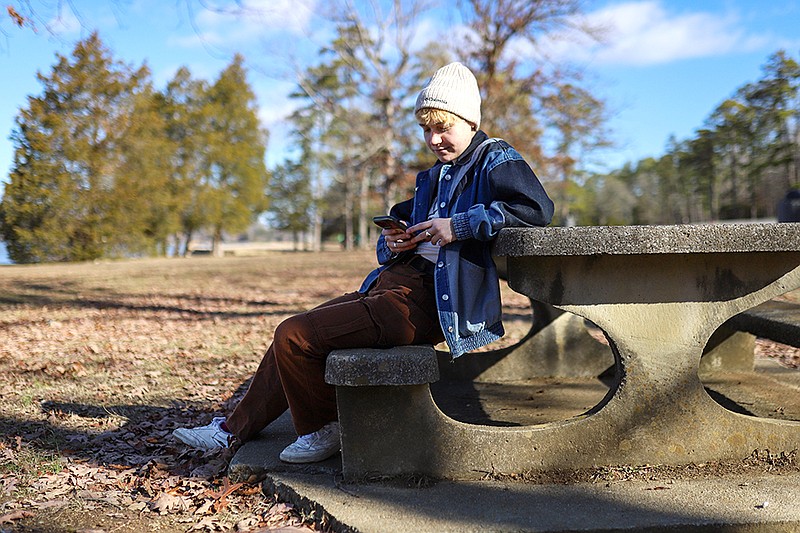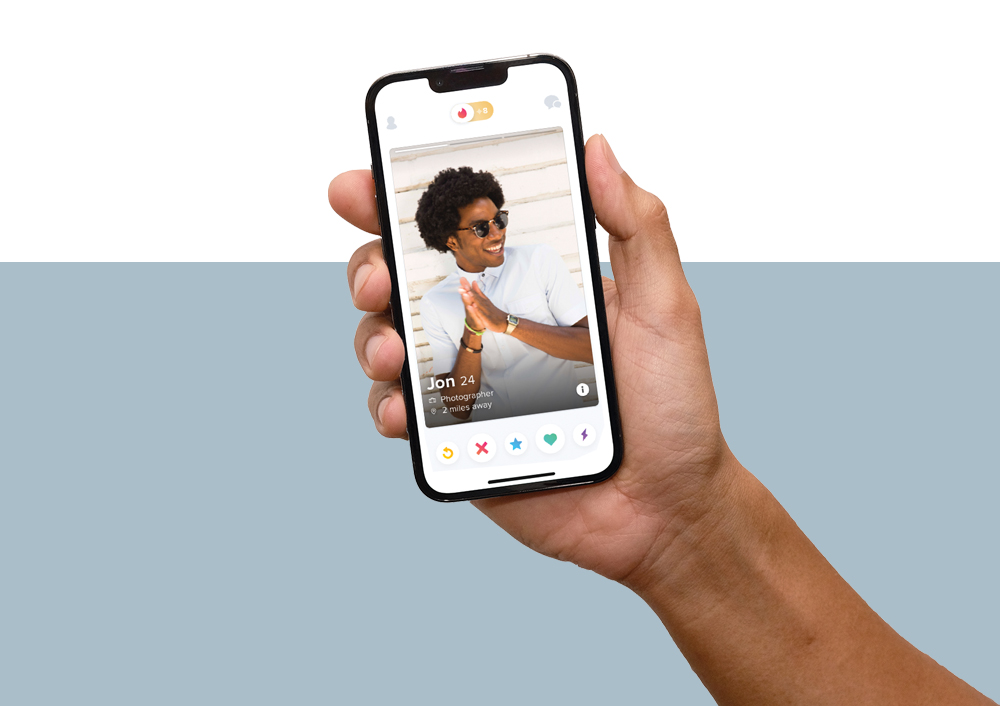In 2006, the Pew Research Center surveyed Americans and found that 66% of them believed online dating was "a dangerous activity." As online dating gained relevance following the inception of Match.com in 1995, a stigma followed suit.
Match is joined today by the likes of Tinder, Hinge, Bumble, eHarmony and a thousand others, and in the digital world we live in, that stigma hangs on by just a thread.
"My friends that aren't in relationships are all on dating apps," says Dominic Waters, a 20-year-old college student at the University of Tennessee at Chattanooga. "I actually can't think of one that isn't in a relationship and isn't using one of these dating apps."
Today, 53% of adults between the ages of 18 and 29 have used a dating app, according to a 2023 Pew report. There's a "big three" for that age group in terms of the apps they're using: Tinder, Bumble and Hinge. The apps have found a recipe for success, to the tune of tens of millions of monthly users, thanks to their convenience. To find a potential match, all you have to do is swipe.
It sounds simple, but people often have conflicting objectives when it comes to certain dating apps. "For Tinder, it's completely a game. I don't take anything seriously there, and I just swipe," says 22-year-old Sarah Williamson, another UTC student. "I don't answer anybody on Tinder."
Tinder wasn't always a game for Williamson. They've been in two relationships in the past that started on the app, and both of them ended, in their account, poorly. "In both of these relationships, I was presented with a version of these people that didn't fully encapsulate who they really were," Williamson says. "When the true version of themselves was revealed, it was just not good. It was like a trap."
Herein lies one of the perceived issues with Tinder: that it's too surface-level. While prompts can be incorporated into one's profile, photos dominate the screen, and it takes more effort (a single, exhausting tap!) to reveal more information about that person.
Dating apps like Zoosk, a more immersive and all-encompassing app, come with a price, but it's how 66-year-old Donna Rose Harvey found the man she's currently dating. Harvey, a Signal Mountain resident, went through a divorce with her ex-husband of 35 years in 2015 and decided to spend $60 on Zoosk for a six-month subscription. As it turned out, she only needed it for a week.
Harvey and Bill Veazey matched, and their first date was a 2-mile hike on Rainbow Lake Trail. "Our homes were less than 2 miles from each other, but our paths would have never crossed otherwise," Harvey said. "It's the best $60 we've ever spent." Matchmaking apps like Zoosk, eHarmony and OurTime tend to attract an older audience.
For the younger crowd, Hinge seems to lend itself to those leaning toward a more serious potential relationship, with a wider array of prompts and a more accessible way of viewing them. Williamson, who prefers Hinge over Tinder partly for this reason, has a curated profile including a poll, their irrational fear (zombies!) and a voice memo. "I have pretty much everything but my home address in it," they say.
Waters is on Tinder and Hinge, but he's also used Grindr, Bumble and Boo, the latter of which is the least mainstream of the bunch. Boo has more of a social media feel to it, giving users the ability to follow people and post updates. Bumble's caveat is that in heterosexual matches, the woman is the only one who can message first between the two.
As for Grindr — used primarily by the LGBTQ+ community — Waters, who dates both men and women, has some choice words. "It's probably the worst app I've ever used in my life," he says.
Still, Waters has had several positive experiences, including one Grindr match that began as a friendship before blossoming into a committed relationship after a year and a half. Dating apps can be especially beneficial for the LGBTQ+ community, who are proportionately more likely to have been on a dating app (51% say they have) than straight people, according to the Pew report.
"I go to the bar sometimes with my friends, but I'm not really able to talk to men or try to pursue them because I can't tell if they're into men as well, so I feel like the dating apps give that icebreaker to know if they are or not," Waters says.
Williamson, who also dates both men and women, agrees that pursuing someone in-person is difficult without knowing their sexual orientation. That's where dating apps like Grindr and Tinder come in handy.
They alert their friends whenever they're on a date from a dating app as a safety precaution. But for the most part, that's all it is — precautionary. For both Williamson and Waters, the overwhelming majority of dating-app experiences haven't been uncomfortable.
There's a tendency to fit dating apps into categories — Grindr as the "gay-friendly" app, Tinder as more of a "hookup" app, eHarmony as an app for older singles — and while there may be some merit behind the labels, the dating apps themselves can only do so much of the work.
"I don't think it's the dating apps themselves. It's the people you're meeting on them that shape the experience," Waters says.

